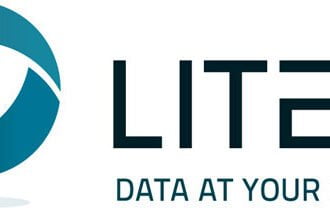Peter Sondergaard, Senior Vice President at Gartner perfectly summed up the currency of the times we live in: ?Information is the oil of the 21st century, and analytics is the combustion engine.” The world is data-driven and if a few years ago McKinsey were talking about the way Big Data could sustain the growth of enterprises and the economy, now the conversation has shifted to the way Big Data could impact society as a whole. We produce 2.5 quintillion bytes of data every single day, and the existence of all this data naturally triggers a change in the way enterprises work and interact with customers. Big Data is frequently quoted when talking about healthcare or finance innovations, but these are just two examples in a long list of industries. The data revolution has also had a deep impact on enterprise software development, changing the way engineers work, while at the same time redefining end user experience. Big Data and software development are becoming more intertwined; Big Data has effectively become a constant driving force of innovation. The ripples caused by the data revolution are apparent for software engineers as well as users.
Big Data makes the software work for the enterprise, not the other way around
The advent of Big Data marks the rebirth of enterprise software. In the traditional model, it was a common practice for the entire enterprise to adapt around the software they used. In a recent survey, 80% of executives who used traditional software responded that the software negatively affected their company?s growth and that it wasn?t flexible enough to adapt to their changing needs. Meanwhile, Big Data made possible custom software development that works for the enterprise and moves with it. Focusing on short learning curves and intuitive interfaces, modern, data-driven software is empowering, not challenging. Enterprise software development now fuels innovation and boosts workplace productivity, preparing businesses for the digital age. Every business faces unique challenges and now, thanks to Big Data, dedicated enterprise software can address these challenges and modernize workflows. When bottlenecks are eliminated, all departments can collaborate seamlessly, utilize resources to the maximum, and stay agile across all project stages.
Managing multiple data streams
The increasing amount of data creates new challenges for engineers. If in the past data would come in rows and columns in Excel, now data is available in many other forms as well, oftentimes unstructured. The new data is dynamic and comes in a variety of forms, including social media posts, location data or information from wearable devices. In order to leverage the full capabilities of Big Data, it becomes imperative for enterprises to learn how to manage and analyze multiple data streams.
The growing role of predictive analytics
Testing is a crucial step in the software development process and failing to allocate to it the resources it deserves can have disastrous consequences after product launch ? and this doesn?t refer only to bugs. Software also needs to be tested thoroughly to make sure it provides an intuitive user interface and delivers exactly the experience it?s expected to deliver. There are two approaches to software testing that can be employed in the development lifecycle:
- Shift-left testing: this is done early in the development process, to reduce bugs and make sure everything starts off on the right foot.
- Shift-right testing: this involves monitoring and tests after the software is released to make sure the product is up to standards.
Thanks to the momentum of the data revolution, programmers can now take advantage of predictive analytics to combine the two testing approaches. This carries a number of benefits; it helps:
- Prevent production delays
- Reduce operational risks
- Predict weak points in the development lifecycle and address them early
- Predict user behavior patterns to ensure the software delivers perfect user experience
- Analyze and adapt to consumer needs promptly.
Traditional testing has its limitations and, in many cases, being thorough is simply not enough. Testers can never know for sure how users will react to a certain error or what series of actions can lead to an error. This is where predictive analytics comes in. Combining the powers of artificial intelligence, statistics, machine learning, modelling, mining and statistical algorithms, predictive analytics can successfully detect user behavior patterns and empower engineers to take action in advance. But, as much as Big Data revolutionizes the development process, we can?t overlook its biggest benefit yet:
Big data creates personalized, targeted user experiences
As software becomes a permanent presence in the lives of modern users, engineers need to focus on user experience more than ever before. The ideal software is no longer just software that works well ? that?s just the minimum requirement. The ideal software is software that adds value, offers relevant, customized user experiences, and solves problems that the users didn?t even knew they had. Large companies like Google and Netflix have already proved that implementing a data-driven approach across all stages of the development process can help businesses deliver better services.










